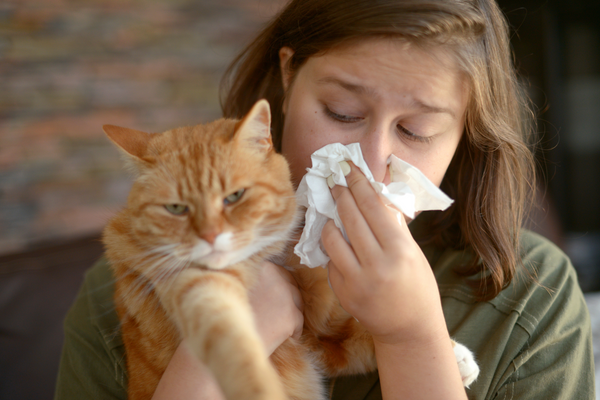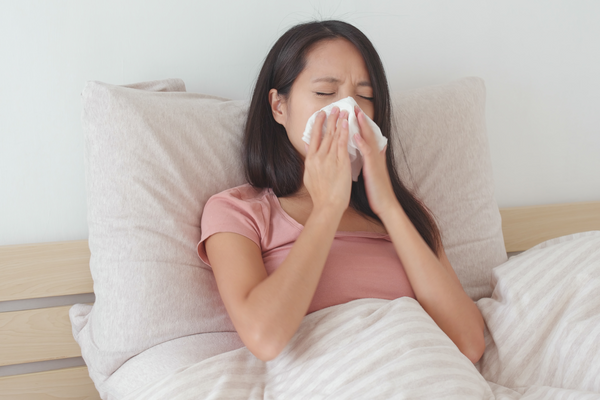Flu Season: Tips for Staying Healthy in 2020

Last year's flu season ended just as COVID-19 began to appear in significant numbers across the United States, so epidemiologists and medical experts got a glimpse of what could happen when influenza and COVID-19 overlap. They found that people can get both flu and COVID-19 at the same time, and that recovering from flu does not protect you from COVID-19. There’s also concern about whether this year’s flu season may further strain the country's already exhausted healthcare system. In the 2019-2020 flu season, there were an estimated 56 million flu cases, with as many as 26 million people requiring medical visits and more than 500,000 needing hospital admissions.
As of November 23, 2020, there are an estimated 12.3 million COVID-19 cases in the U.S. and more than 58.5 million worldwide. So far, the seasonal influenza activity in the U.S. remains lower than usual for this time of year. The U.S. Centers for Disease Control and Prevention (CDC) will begin reporting infection rates later in the season.
With influenza and COVID-19 cases expected to spread this fall and winter, it’s vital to know how to protect yourself and your family with preventative measures. We can all prepare for the worst and hope for the best. With that in mind, here are some tips for staying healthy this winter from both influenza and COVID-19.
COVID-19 & the Flu Share Similar Symptoms
The disease COVID-19 and influenza share many similarities. Both illnesses can be spread through respiratory droplets in the air when an infected person coughs, sneezes, or talks, as well as when people touch a surface or object contaminated with the virus, and then touch their mouth, nose, or eyes. Therefore, we all need to be extra vigilant about monitoring even the mildest symptoms. Both COVID-19 and the flu share many symptoms to varying degrees, such as fever, fatigue, muscle pain, body aches, sore throat, shortness of breath, headache, coughing, and runny or stuffy nose. One major difference is that COVID-19 is more likely to cause a loss of taste or smell.
After a person is exposed to an influenza virus or SARS-CoV-2, the novel coronavirus that causes the disease COVID-19, it can take several days to see symptoms. COVID-19 symptoms can take as long as 14 days to appear after an exposure. Both illnesses also pose a risk of serious complications, such as pneumonia, fluid in the lungs, heart attack, stroke, and inflammation of the heart, brain, or muscle tissues.
Alarmingly, experts believe that it’s possible to get the flu and COVID-19 at the same time. Having both infections simultaneously could greatly impact your immune system and create a host of serious symptoms. Hospitals are typically overrun with serious influenza cases every year, and a health disaster like a “twindemic” would undoubtedly overwhelm their capacity.
Tips to Avoid Influenza
The good news is that the preventative measures introduced to protect people against COVID-19, such as mask wearing, hand washing, and social distancing, also work against the flu. And unlike COVID-19, we already have vaccines to fight the flu. Though it’s not 100% effective, medical experts recommend the influenza vaccine as one of the best defenses against the illness. According to Dr. Mary Watson Montgomery, an infectious disease expert at Harvard-affiliated Brigham and Women's Hospital, "It's more important than ever for everyone to get the flu vaccine, especially older adults."
Additionally, there are a number of recommendations to stay healthy this winter:
- Wash your hands thoroughly and frequently with soap and warm water throughout the day.
- Avoid touching your eyes, mouth, and nose without first washing your hands.
- Use hand sanitizer (if soap and water aren’t available).
- Cover your mouth when you cough or sneeze.
- Practice social distancing.
- Stay home if you believe you’re sick.
- Avoid contact with those who are sick.
- Clean and disinfect frequently touched surfaces at home, work or school, especially when someone is ill.
Fight Germs All Year Long with Vital Oxide

At The Ecology Works, we understand the need for trustworthy, effective, eco-friendly disinfectants that can be safely used around the home. That’s why we created Vital Oxide. Not only can our EPA-registered disinfectant be used to clean, it also kills 99.9% of bacteria and viruses without any harsh chemicals, strong odors, or alarming safety warnings. In addition, Vital Oxide is on the EPA’s List N as a disinfectant approved for use against SARS-CoV-2, the novel coronavirus that causes the disease COVID-19.
During this year’s flu season, the on-going pandemic, and beyond, good household hygiene means cleaning and disinfecting the same areas you tackle in normal times, though much more frequently now. Before sanitizing and disinfecting, always remember to pre-clean surfaces beforehand to remove grease, dirt, grime, and other impurities. Otherwise, the disinfectant will not be able to work effectively. Every day, you should clean and disinfect high-touch surfaces around the home, including countertops, light switches, faucets, remote controls, doorknobs, handles, computer keyboards, tablets, phones, and headphones (NOTE: Never spray liquid directly onto electronics - instead, wipe down electronics with a clean microfiber cloth that’s been sprayed with Vital Oxide). In cases where more frequent disinfection of surfaces results in possible buildup of dry disinfectant residue, a wipe down with a moist towel or microfiber cloth of surfaces that come into contact with clothing (chairs, desks, etc.) will prevent any possible discoloration of fabrics.
We all make messes and we care what we clean with. At The Ecology Works, it’s important to us that all of our products, including Vital Oxide, are good for our households as well as our environment. After use, Vital Oxide breaks down to a simple salt and produces no harmful by-products, making it an Earth-friendly choice.
If you have any questions about our products, please feel free to Contact Us or send us a message on Facebook. We’re all in this together and we’re here to help.





